Network Science 101
Network science is a powerful tool that can help you create a bigger collaborative impact.
Network science is the study of connectivity and networks in all forms. From a single pair of nodes to complex networks with millions of members, network scientists map and analyze, identifying patterns between a network’s attributes and their outcomes. Based on these observations, we can create network science theories that help explain why networks function the way they do, and how we can leverage them more effectively.
In our Network Science 101 Guide, you will learn the fundamentals of this exciting field of study, including the methods network scientists use, common terminology in the field, and two of the most important network science theories. Let’s get started with a video with a video from our founder & CEO, Network Scientist Dr. Danielle Varda.
Watch a video from our CEO, Dr. Danielle Varda...
What is Social Network Analysis and What Does it Teach Network Scientists?
One of the most common research methods used in network science is network mapping. We start by asking each individual in the network who they are connected to. We can then plot these connections out on a map to demonstrate who is connected to whom. Circles (nodes) represent individuals, while lines, (called edges) represent the presence a connection between them.
A network map can be used to visualize any kind of network, from a network of friends, to the world wide web of computers you’re using to read this guide! Our focus at VNL is helping networks of people and organizations improve their work to help make the world a better place.
Network scientists analyze the connections in a network map using mathematical algorithms to create measures and metrics about a network’s structure – the way its nodes are interconnected, or not. This makes it much easier to compare the network to others and test theories about the way their qualities affect their outcomes. These are the theories that generate the most insight for network builders and leaders.
Measuring the Quality of Network Relationships Provides Big Insights
A network map can garner even greater insights if you ask questions about the quality of each relationship. You can then change the weight of the line or the size of the nodes to add more information about the quality of the network relationships. This allows you to create powerful visual representations of both the structure and quality of the connectivity to identify patterns across both dimensions of the network.
Check out our New Infographic on Network Analysis!
The infographic on the right includes a number of different network science terms and metrics. They allow network scientists to classify and compare a network structure, so they can develop conclusions about the way they work and function. They are also a helpful tool for network practitioners using data to guide the way they build and leverage relationships.
Keep reading further on to learn more about the strength of weak ties – one of the most consequential network science theories of all time.
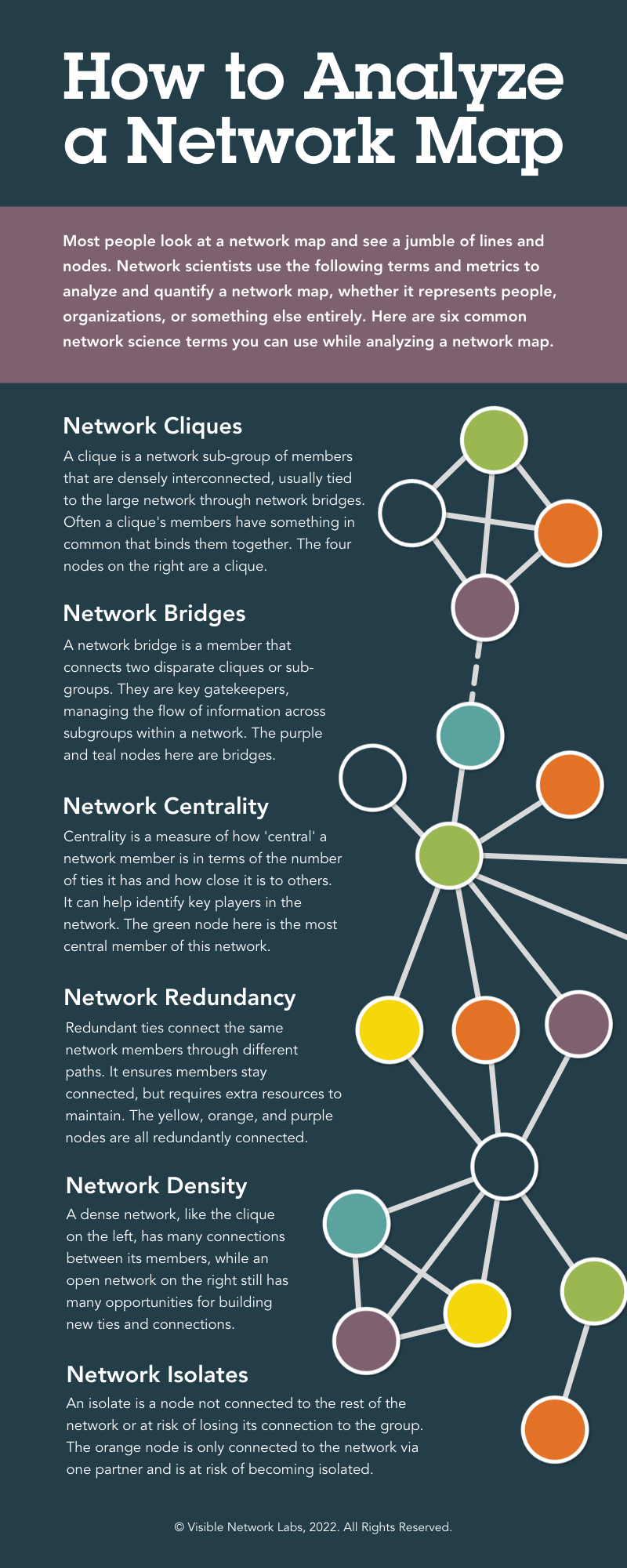
The Strength of Weak Ties: A Network Science Theory
A great example of this kind of network mapping in practice is the theory of the strength of weak ties. When sociologist and Stanford professor Mark Grannovetter wanted to learn more about how people get employment through their personal networks, he asked people with new jobs whether anyone helped them get the position. He also collected info about the structure and quality of their personal networks to look for patterns among those getting jobs. He categorized each tie as strong (relationships with friends and family) or weak (acquaintanceships and colleagues). When he began to analyze the data, he found something surprising.
Most People Get Jobs Through Weak Ties: Acquaintances, Not Family or Friends
Contrary to expectation, Grannovetter found that most people found jobs through weak ties, rather than through the strong ties in their network. He reasoned that those we are close to, such as friends, parents, and siblings, often share many of the same social circles as us and get information from the same places. In network science, this is referred to as homophily – the idea that birds of a feather flock together. We typically form the strongest network ties with those similar to ourselves. As a result, we don’t learn about many new opportunities from these people, because we likely already know what they know.
People Unlike Ourselves Have Access to More Innovative and Unique Ideas and Resources
Our acquaintances on the other hand, usually only have one or two commonalities that keep you connected – perhaps they are a coworker or a parent of a friend. These weak ties are far more likely to have novel sources of information, like contact at a company you’d like to work at, making them the best source of new opportunities like employment. This principle – the strength of weak ties – applies to nearly all social networks and teaches a key lesson. Building diverse networks with many weak ties is more likely to result in innovative information-sharing. This insight demonstrates the remarkable potential of network science to improve practice.
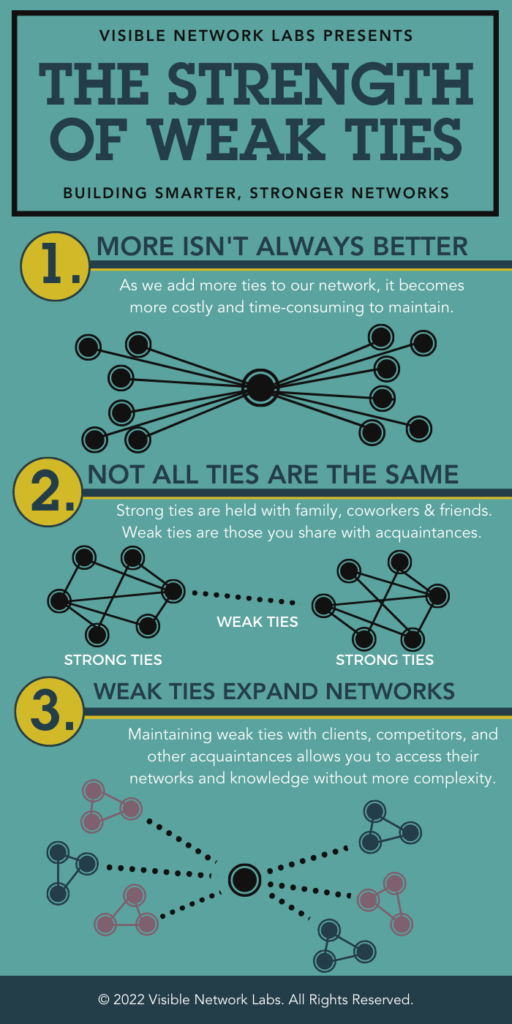
Structural Holes: A Good Idea for Networks
Another complementary network science theory refers to ‘structural holes’ in networks. These gaps in connectivity represent an intentional choice not to connect two nodes, and instead leave a space between them. This may seem counterintuitive – why wouldn’t you want to connect to as many people as possible? The key insight behind the theory of structural holes is that participating in a network entails costs in the form of energy, motivation, time, and money. There is a limit to the number of relationships you can maintain in any network.
Structural Holes Represent an Intentional Choice to Stay Disconnected in Order to Save Resources
Structural holes help conserve resources to build the most diverse and strategic network possible, while limiting redundant or unnecessary connections. You don’t have to try to connect to everyone in your network, so long as you maintain strong ties to key gatekeepers. These individuals or organizations can maintain ties to distinct sub-groups and can help activate them when you need their help. Thus, rather than having to connect to all ten people in a sub-group, you can connect to the one person in the group you trust most, and rely on them as your liaison.
Structural Holes and Weak Ties are Two Ways Network Science Informs Network Strategy
This illustrates another network science theory with obvious ramifications for those building and leading networks. Network science is a powerful tool for collaboration, yet few individuals or organizations realize its benefits, or use it to improve the way they work together. At Visible Network Labs, it is our goal to make network science theories and tools accessible, in order to accelerate systems change for good.
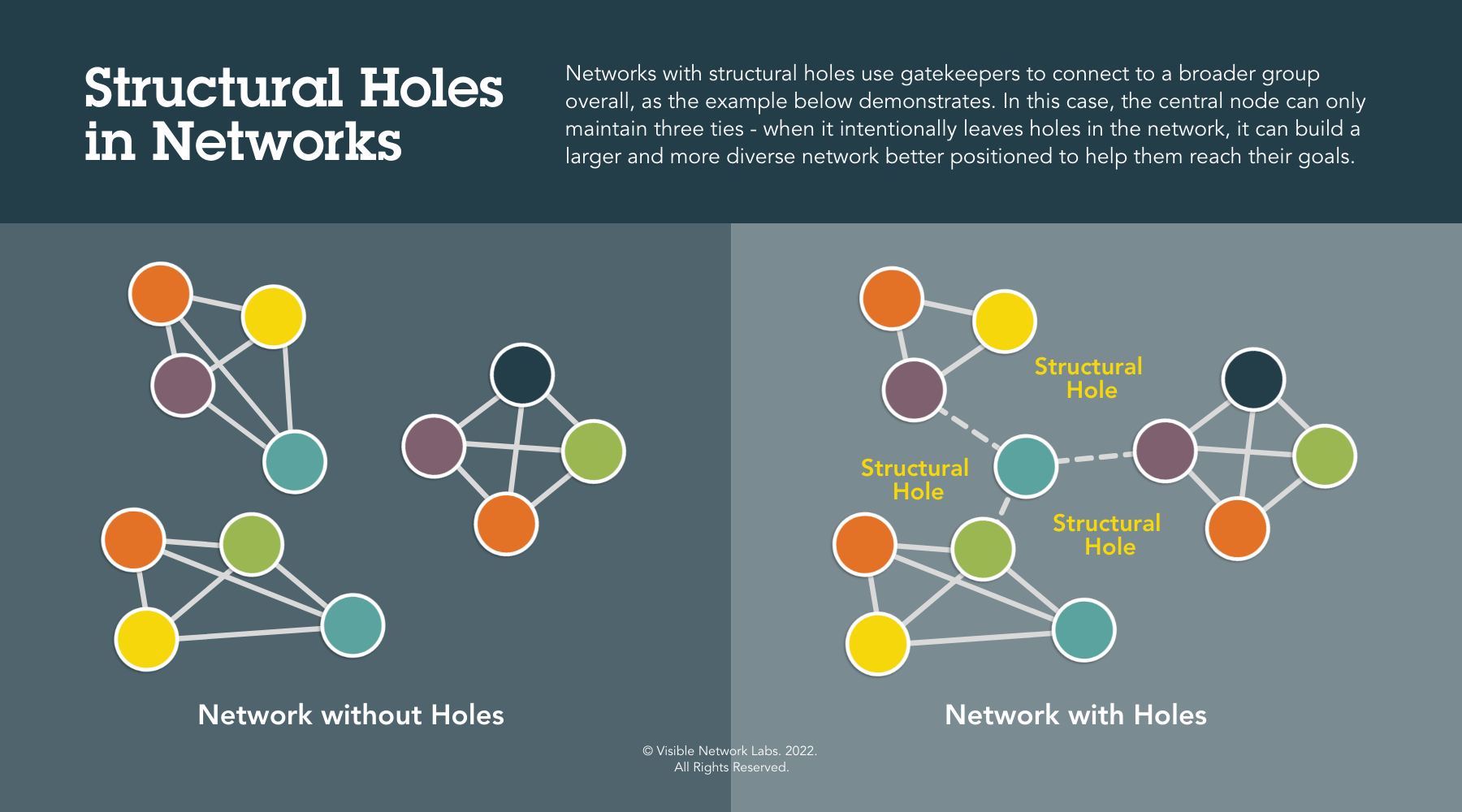
Applying Network Science Requires Network Data
Over our decade of experience evaluating and analyzing networks, we’ve created a five-step process for creating network strategies using network science-informed analysis. You are already engaged in step one: shifting your mindset to think like a network scientist. You can continue this work in our free resource library, our webinar archive, or by attending an upcoming event.
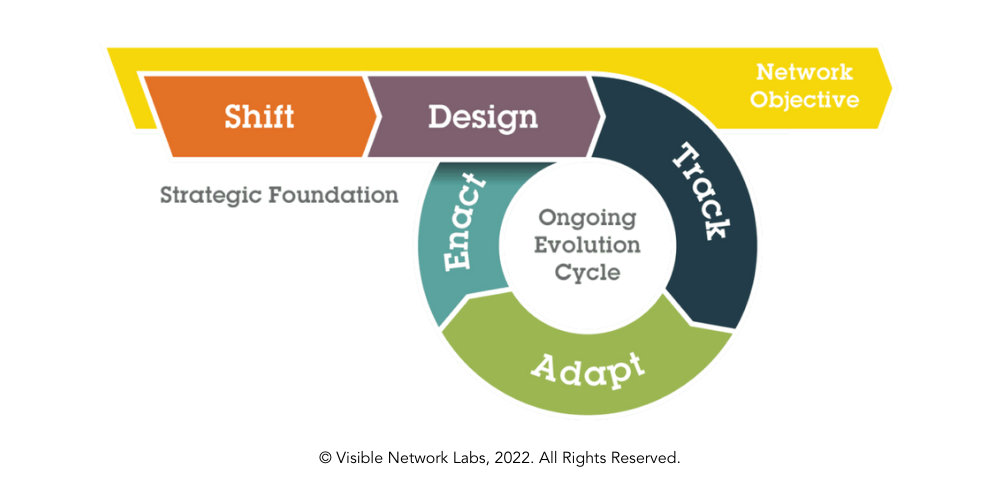
Related Read: What is a Network Strategy and Why Do You Need One?
The third step of our method involves collecting data about your network in four different areas. First, we measure the connectivity in a network – who is connected to who, and in what ways? Second, we look at the quality of connections in terms of trust and value. Which partnerships are the most valued, and where can trust be strengthened? Third, we consider agreement across the network, analyzing how much partners agree and disagree about the network’s goals and tactics, as well as its successes and barriers. Fourth, we try to attribute network partnerships to the relationship-building work of the network convener. Together, data in these four areas provides a wealth of information and insights for creating and adapting a network strategy.
The fourth and fifth steps of our method involve analyzing and interpreting your data to adapt your strategy over time, and then enact those changes on the ground. These steps are very specific given their unique context and history – the process looks different for each network. Some present their data to the entire group and hold a workshop to analyze it together, while others allow the backbone organization to take a lead role in analyzing the data, sharing their findings and recommendations to the group. Either way, the decision should be collaborative, so relevant stakeholders feel ownership over the changes to the strategy.
Looking for More Information? Read one of our Briefs!
We put together a number of Network Science Briefs on topics like social network analysis, bounding your network, and evaluating networks. Here are some of our favorites to download, read, and share with your team. You can also click here to contact our team and set up a complimentary introduction call – we would love to connect!

Network Member Attributes: Brief
A Network Science Brief from Visible Network Labs When conducting a social network analysis or using PARTNER CPRM, you have the opportunity to collect more useful descriptive data about your partners with network member attributes. These are characteristics or demographics of the organizations that make

Network Survey Timing: Brief
A Network Science Brief from Visible Network Labs Our clients often ask us, ‘how often should we be surveying our network and conducting follow-up evaluations?’ While we wish there was a simple answer to this question, in reality, it depends on your unique context and

Raising Your Response Rate: A Brief
A Network Science Brief from Visible Network Labs A high response rate is ideal for any survey, but it’s a critically important necessity when it comes to a network survey. This is because network data is not representative, as with most surveys. Each individual in

PARTNER Trust and Value Metrics: A Brief
A Network Science Brief from Visible Network Labs As the old saying goes, ‘garbage in, garbage out.’ If you aren’t asking the right questions during a social network analysis, you aren’t going to have reliable data to analyze later on. For this reason, we spent
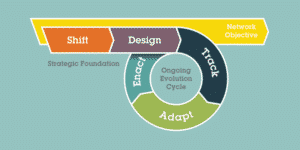
PARTNER Method for Network Strategy: A Brief
A Network Science Brief from Visible Network Labs Once you make the decision to take a network approach to solving a problem, you need to design a specific strategy – the way you will build, manage and evaluate your network – in order to reach
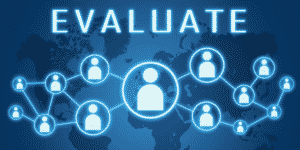
Network Evaluation Framework
A Network Science Brief from Visible Network Labs Here at Visible Network Labs, we use our own framework for conducting network evaluations. We created it iteratively through dozens of surveys, interviews and evaluations with networks and collaboratives in a variety of sectors. The result is

Social Network Analysis Brief
A Network Science Brief from Visible Network Labs Social Network Analysis (SNA) is the study of the structural relationships among interacting actors and the resulting effect on the network (how those relationships produce varying effects). A network is any interconnected group or system. The power

Bounding Your Network Brief
A Network Science Brief from Visible Network Labs Many of our users report that deciding who to include in their network survey is the most difficult step in the entire process. The list you send your survey to dictates the partner options respondents will have.
Connect with our Team!
Contact the VNL team to demo PARTNER™ or discuss a research or evaluation project. We can help you learn more about our services, help brainstorm project designs, and provide a custom scope based on your budget and needs. We look forward to connecting!
Email our team: hello@visiblenetworklabs.com
Send a message: Contact Us Here

